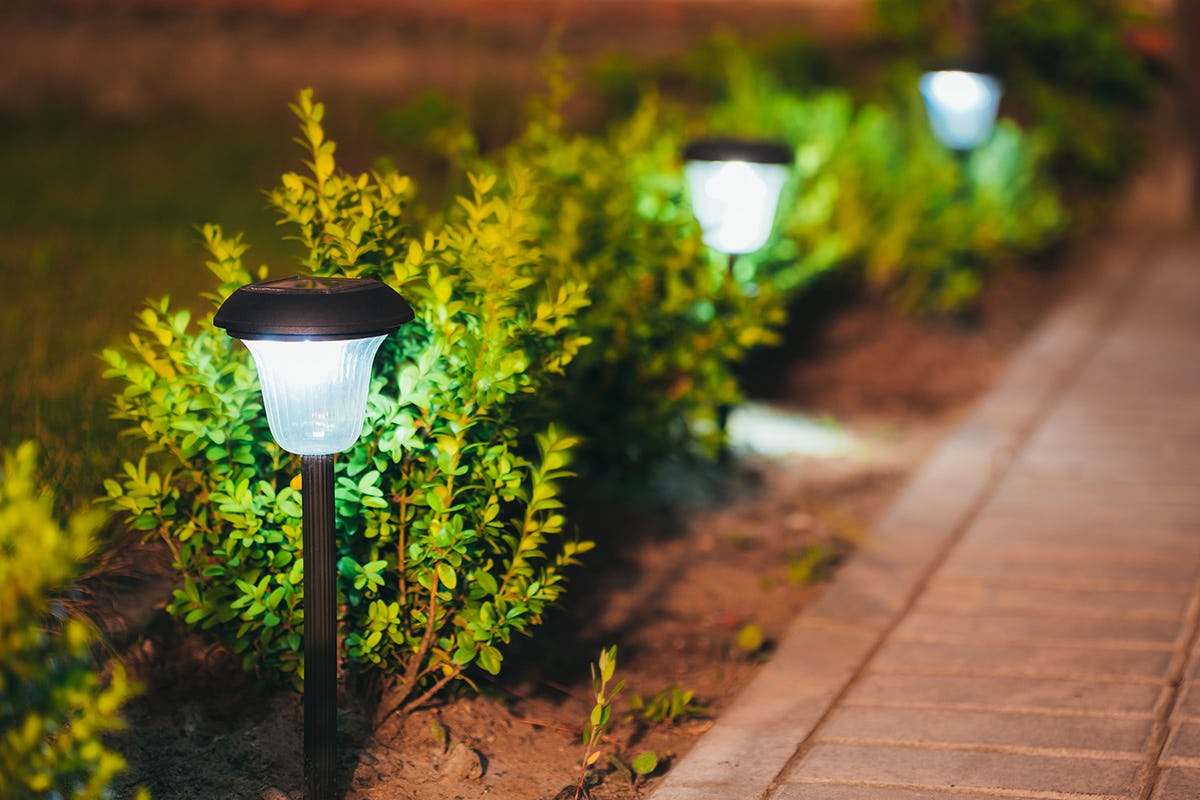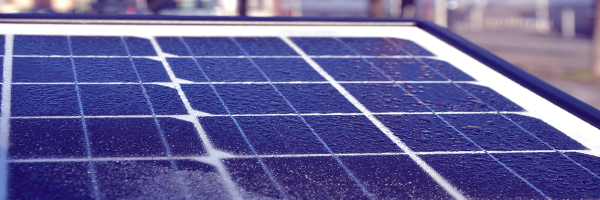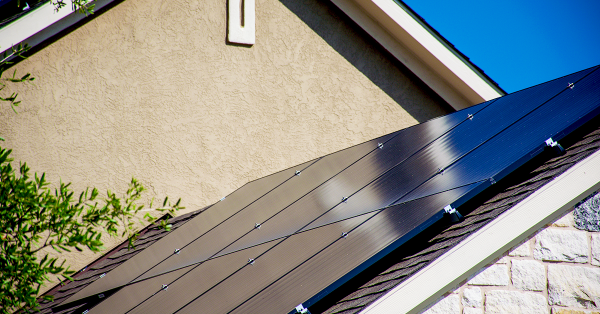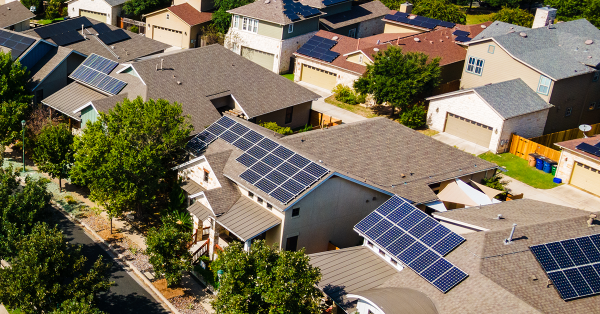The sun is a powerful entity. It's the driving force behind all life on Earth and provides valuable renewable energy. We harness the light and heat and use them for various things, like warming water and creating electricity. But that's not all solar power can do. Let's examine other uses for solar power.
A Brief History of Solar Energy
The use of the sun's energy dates back thousands of years. Before we realized the power it provided, humans used it in many different ways. Ancient Greeks, Egyptians, and Native Americans knew they would have the most energy-efficient sun exposure if they faced their buildings towards the south.
Uses of the sun's energy varied throughout history, and it wasn't until the 19th century that humans discovered its most practical use. In 1839, Alexandre Edmond Becquerel, a French physicist, found that an electrical charge was created when electrons from metal conductors were stimulated when exposed to light.
Development of this new technology advanced through the next century until Bell Labs developed silicon-based solar cells in the 1950s. This invention led to the production of solar panels and a sustainable energy source.
Solar technologies have advanced tremendously throughout the years, and manufacturers of solar panels are still working on making them more efficient and less expensive.
Why You Should Go Solar
The most widely known reason to go solar is its eco-friendly energy nature. But solar energy offers homeowners much more than a smaller carbon footprint. One of the most significant advantages is that sunshine will never run out! The sun provides us with a renewable energy source that we can use to make energy-efficient home improvements.
Going solar provides one with the following additional benefits:
Minimal maintenance
Quiet conversion of sunshine into electricity
Emission-free power
The reduction or elimination of electricity bills
Energy independence
Greater energy efficiency
Increased home value when selling
Tax credits that make installation more affordable
The solar energy business continues to grow, leading to more jobs in the United States.
How Solar Power Works
Solar cells are constructed of semiconductor materials that collect solar radiation (heat) and convert it into energy. A single solar cell can only produce a limited amount of energy, but several cells together make panels or modules that can generate sufficient power.
No two Homeowners have the exact same needs. Solar cells are modular and scalable, so a customized solar system is constructed to match each house's specific needs. Solar panels for residential use can be attached to an existing electricity distribution system connected to the grid. They can also be used independently for off-grid applications.
How to Use Solar Energy in Your Home
When you think about using solar power in your home, you likely think about rooftop solar panels. Although this is a valuable use, not every home is a candidate for installing solar panels. If you live in an area without an abundance of sunlight, you may not find rooftop solar panels helpful, but there are many other ways to use solar in your home daily.
Solar Electricity
You've probably heard a lot about this use in recent years. The price of solar panels is declining, and consumers are learning about the benefits of solar power, making the demand for solar electricity grow.
A solar panel system typically gets installed onto a residential or commercial rooftop. Solar panels generate electricity, offsetting the property owner's dependence on the local utility companies, and any surplus energy gets fed into the electric grid to support the needs of others.
Solar batteries connect to your solar power system, allowing you to store solar electricity for use at night or provide backup power in an emergency. With a solar power and battery system or generator, it's possible to have a fully-functional home but live entirely off the electricity grid.
Learn more about solar energy by visiting our blogs:
Solar Water Heating
Solar energy can power water heating systems. Typically, solar power heats the water inside the home using rooftop solar panels to absorb the sun's energy and transmit it to the water tank.
Another use for solar power, especially in warmer climates like Texas, is heating swimming pools. Water enters collectors from the bottom and rises through individual tubes to the top. The sun's natural energy gradually heats the water as it rises. This heated water recirculates, and the procedure gets repeated until your pool reaches the ideal temperature.
Installing a solar water heating system costs more than traditional water heaters. However, you can't compare the savings. You could see your water heating bill decrease between 50% and 80%, but how much you save will be influenced by the following factors:
How much hot water you use
Overall performance of the system
Your geographic area and solar resources
Financing and incentive options
Furthermore, because the sun provides renewable energy, you don't have to worry about fuel shortages or electricity price inflation.
Solar Heating
Solar heating systems often power radiant floors or work with forced hot air (FHA) systems to heat homes. Modern solar technologies can also heat residential and commercial properties in the winter.
This technology is known as passive solar heating and is created by designing the walls, windows, and floors to collect and store the sun's energy during the day. The architecture will slowly distribute the warmth into each room, keeping the space at a comfortable temperature.
Solar Ventilation
Some homeowners choose to use the sun's energy for solar ventilation. They install solar-powered attic fans to help cool their properties throughout the sweltering Texas summers.
This tactic alleviates some of your HVAC system's heavier work and can lower your monthly utility bills. It's a valuable solution for homeowners who want to use solar technologies but cannot install a full solar system.
Solar Generator
Solar generators are small — frequently portable — power banks that generate electricity using solar panels. Modern solar generators may power various gadgets depending on the generator's capacity. Large generators can run refrigerators, but most get designed to run low-energy electronics like cellphones and televisions.
Wearable solar generators are available as vests and backpacks that will supply low-voltage power. Fortunately, it's just enough power to charge cell phones, small computers, tablets, and other portable devices. Solar technologies like this benefit those traveling long distances on foot.
Solar Lights
From home landscaping to security lighting, solar lights are popping up worldwide. You can find various inexpensive and luxurious styles and sizes of solar lighting at your local hardware store and on the internet.
One popular form of solar lighting is the solar umbrella. You can often find these alongside the pool at hotels. They are the perfect design for solar energy capture because of their large surface area. As they are exposed to significant amounts of sunlight daily, they can supply power to a bright light for a long time after dark.
Portable Solar
In today's world, we love staying connected. We have smartphones, tablets, smartwatches, and numerous other devices that run out of battery power at the worst time. However, portable solar chargers work to keep our electronic devices powered anywhere there is access to sunlight.
Solar Vehicles
Electric vehicles have been making waves recently. Sure, they are better for the environment, but what happens when you drive down the wrong road and your battery dies?
Experts are merging electric vehicles with solar power to eliminate this problem, making the future of transportation solar-dependent. Solar energy can power trains, subways, buses, planes, cars, and even roads, making solar transit an up-and-coming sustainable energy option.
Solar Cooking
Solar cooking uses the sun's UV rays to heat your food. The sun's rays enter the solar cooker and are converted into infrared light, making the molecules in food vibrate and heat up.
In addition, solar ovens are becoming increasingly popular home appliances. A solar oven is a slow cooker, similar to an electric crockpot.
These solar ovens warm food to relatively low temperatures over a long period using slanted reflectors that direct sun energy into a chamber. Cooking can take eight to ten hours, depending on the recipe. Because the sun provides renewable energy, the fuel source is again available for free.
Wearables
Charging your wearable devices has always been a problem. No one likes having to remove their fitness tracker every few days to charge it, especially if it interferes with their results. Consequently, manufacturers of these devices are exploring solar-powered devices that gather and store energy from the sun when worn outside.
Lightweight and heat-resistant solar clothing will change how we think about our personal technologies. We won't have to carry around charging cords and search for somewhere to plug in. Solar hats, purses, coats, and other clothing will allow you to power up your devices just by sitting in the sun.
Solar Fountains
Outdoor fountains use a pump to move the water through the fixture. With solar technology, photovoltaic panels can power these pumps to save electricity and the need for an extension cord or buried electrical line traveling across the property.
Solar Paint
Solar paint is one of the latest solar technologies. Its design allows it to collect energy from sun and water by dividing water into hydrogen and oxygen. Hydrogen is then used as an additional power source. Solar paint is not commercially available, but it is a work in progress that will allow us to turn practically any surface into a solar cell.
Solar Trash Cans
Solar-powered trash cans can be found across America, including on college campuses. They use a 12-volt battery that charges via the sun. These bins compact trash inside the container, allowing for a higher waste capacity. This increase means that the bin needs emptying less frequently, reducing the number of vehicles on the road collecting trash.
What Solar Power Can't Do
Converting your home to run on solar power should be a win-win situation. After all, who doesn't want to save thousands of dollars on energy costs while simultaneously saving the environment? However, solar power still has its drawbacks.
It Can't Work at Night
You can only use solar energy while the sun is shining during the day. Because there is no sun at night, the photovoltaic panels cannot convert solar energy into electricity.
It Can't Work in Shady Areas
Solar panels shaded from the sun will not produce any useful electricity. For the best results, panels with southern exposure are ideal. Photovoltaic electricity production is impossible during periods of shade from surrounding buildings or trees. Don't confuse shade with an overcast day, though. Solar panels still produce electricity in cloudy or foggy conditions.
It Won't Take You Completely off the Grid
Since solar panels only work during the day, practically all solar energy consumers will remain linked to the grid. Your panels create electricity throughout the day, most of which doesn't get consumed; this excess energy gets fed into the grid.
When your panels are not producing power, your home takes electricity from the grid in the traditional way. You get credited for the energy you contribute to the system and only paid for what you use at night.
If you want to go off the grid, you'll need to invest in battery storage as well.
It Won't Protect You from a Power Outage
Because a solar-powered home remains connected to the local grid, safety mechanisms are in place that shut down the solar system during a power outage. This safety feature prevents workers attempting to restore power from being electrocuted by your solar system.
Our Greatest Asset
The sun is one of our greatest assets and an incredible energy source. It doesn't depend on gas, coal, oil, or other combustible fuel that leads to pollution. As the world moves away from these nonrenewable energy sources, solar energy will continue to become more popular.
Overall, these solar products are an excellent investment and will save you money. Solar technologies will continue to improve, and as a result, new products will be introduced. The possibilities for solar power seem endless, from planes and trains to backpacks and swim goggles.
As new uses for solar energy continue to develop, make sure you do your research and learn how it can help your household or business.
Rhythm Rooftop Solar Pays!
Texas has an abundance of sunshine, making solar an incredible option for living a sustainable lifestyle. At Rhythm Energy, we offer several renewable energy plans to contribute to your eco-friendliness. We have electricity plans backed by 100% renewable energy and get our power from wind and solar sources.
With Rhythm Energy as your electricity supplier, you have the option to participate in our solar buyback plan. This program pays you just for allowing your solar panels to collect the energy!
Excess power you don't need is sent to the grid, supplying other families with renewable energy. Get in touch with a member of our customer service team to learn more about this valuable program!
Think solar might be on your home's horizon? Our free solar concierge is here to help.



